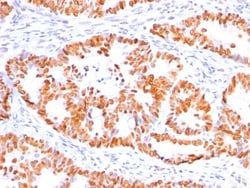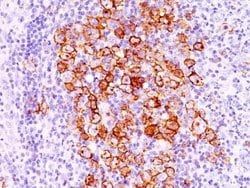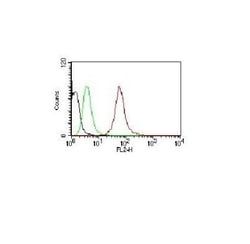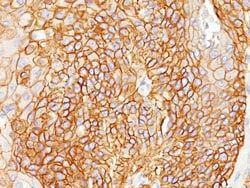Vimentin Antibody (VM452), Novus Biologicals™
Manufacturer: Novus Biologicals
Select a Size
| Pack Size | SKU | Availability | Price |
|---|---|---|---|
| Each of 1 | NBP229433-Each-of-1 | In Stock | ₹ 47,882.00 |
NBP229433 - Each of 1
In Stock
Quantity
1
Base Price: ₹ 47,882.00
GST (18%): ₹ 8,618.76
Total Price: ₹ 56,500.76
Antigen
Vimentin
Classification
Monoclonal
Concentration
0.2 mg/ml
Dilution
Western Blot 0.5-1ug/ml, Flow Cytometry 0.5-1ug/million cells, ELISA 1-5ug/ml for coating, Immunocytochemistry/Immunofluorescence 1-2ug/ml, Immunoprecipitation 1-2ug/500ug protein lysate, Immunohistochemistry-Paraffin 0.5-1.0ug/ml, Immunohistochemistry-Frozen 0.5-1.0ug/ml, Knockout Validated 0.7 ug/ml
Gene Alias
FLJ36605, vimentin
Host Species
Mouse
Purification Method
Protein A or G purified
Regulatory Status
RUO
Primary or Secondary
Primary
Test Specificity
This monoclonal antibody reacts with a 58kDa protein identified as Vimentin. It shows no cross-reaction with other closely related intermediate filament proteins (IFP however, when used in panels with other antibodies, it is useful for the sub-classification of a given tumor. Expression of Vimentin, when used in conjunction with anti-keratin, is helpful when distinguishing melanomas from undifferentiated carcinomas and large cell lymphomas. All melanomas and Schwannomas react strongly with anti-Vimentin. It labels a variety of mesenchymal cells, including melanocytes, lymphocytes, endothelial cells, and fibroblasts. Non-reactivity of anti-Vimentin is often considered more useful than its positive reactivity, since there are a few tumors that do not contain Vimentin, e.g. hepatoma and seminoma. Anti-Vimentin is also useful as a tissue process control reagent.
Content And Storage
Store at 4C.
Isotype
IgG1 κ
Applications
Western Blot, Flow Cytometry, ELISA, Immunocytochemistry, Immunofluorescence, Immunoprecipitation, Immunohistochemistry (Paraffin)
Clone
VM452
Conjugate
Unconjugated
Gene Accession No.
P08670
Gene Symbols
VIM
Immunogen
Recombinant full-length human vimentin protein (Uniprot: P08670)
Quantity
0.1 mg
Research Discipline
Cancer, Cellular Markers, Cytoskeleton Markers, Growth and Development, Hypoxia, Neuronal Cell Markers, Neuronal Stem Cell Markers, Neuroscience, Phospho Specific, Signal Transduction, Stem Cell Markers, Stem Cells
Gene ID (Entrez)
7431
Target Species
Human, Porcine, Bovine, Canine, Chicken, Feline, Goat, Mouse (Negative), Rat (Negative)
Form
Purified
Related Products
Description
- Vimentin Monoclonal specifically detects Vimentin in Human, Porcine, Bovine, Canine, Chicken, Feline, Goat, Mouse (Negative), Rat (Negative) samples
- It is validated for Western Blot, Flow Cytometry, Immunohistochemistry, Immunohistochemistry-Paraffin, Protein Array, Knockout Validated.











